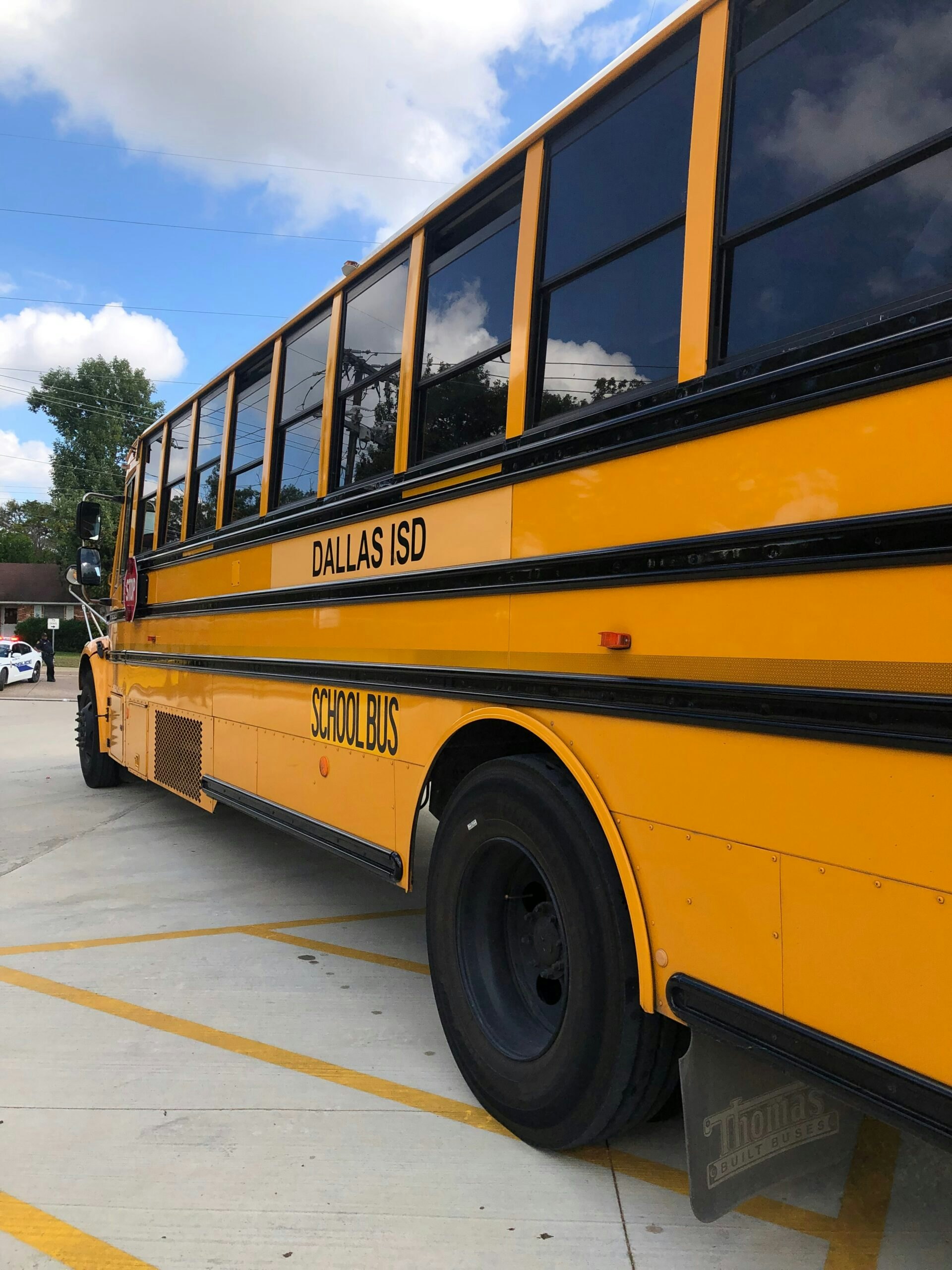Lessons learned from Dallas, Austin, and Houston inform these recommendations for leaders in any city focused on improving outcomes for young people.
The Texas Story is a special report from the George W. Bush Institute on paths to opportunity for young people in select Texas regions. Are young Texans on track for prosperous, self-determined lives? How do we know?
This article, the final one in the series, puts forth recommendations for leaders. Part one focused on outcomes data and student perspectives. Part two explored the importance of effective governance and community ecosystems. Part three addressed innovation in each of the three regions.
We define governance as both the actions of the school board and the opportunistic use of legislation and public policy. We define ecosystem as the broad coalition of organizations and community leaders focused on education and workforce outcomes across a city or region. Finally, we define innovation as the use of strong practice, sometimes new and sometimes not, with the goal of improving student outcomes.
The urban and suburban boom of Texas is full of both promise and risk. According to the 2020 census, Texas grew the fastest – and grew more diversely – than any state in the union since 2010. And according to Texas 2036, the state’s population is likely to grow to 10 million by 2036, Texas’ bicentennial. Over 71% of jobs will require some college, but only 32% of Texas high school students earn a degree or credential within six years of graduating high school.
According to the National Assessment of Education Progress (NAEP), the gains that Texas students were making in the 1990s and 2000s have stalled, leaving many Texas young people behind in reading and math, the academic building blocks needed for future success.
Unemployment in Texas is low again, at 5.6% in September 2021, after hitting a record high of nearly 13% in April 2020. Texas companies, large and small, are adding jobs and competing for talent. Texas excels at importing talent thanks to a potent and attractive mix of incentives for businesses to relocate and expand, and no state income tax, and job availability. The challenge for Texas is whether young Texans, the homegrown talent of all races and ethnicities, have access to this growth in opportunity.
As this series detailed, urban leaders in Dallas, Houston, and Austin are addressing the opportunity gap for young people in their cities in different ways. While there is no one correct approach, directly acknowledging the current state is essential for any meaningful change. Adults need a seriousness of purpose that supersedes politics and the gravitational pull of the status quo.
Sometimes that means doing more of what is working. Sometimes it means stopping what is not serving students. It always means that the adult leaders across a region, not just those employed by the school district, need to meaningfully engage with their community’s education and opportunity challenges. Improvement is only possible when governance, ecosystem, and innovation are used together in service of young people.
Lessons learned from Dallas, Austin, and Houston inform these recommendations for leaders in any city focused on improving outcomes for young people.
-
- Put outcomes above sound bites. Outcome data from the state and districts are essential. Intermediaries like the Commit Partnership and Good Reason Houston uses that comparable data to say true things about what is happening in the system. Outcome data reveals which students are on track for their next step and who is falling behind; it is impossible to make decisions about priorities and investments without considering the success of students.Successful intermediaries make a huge difference. They do far more than critique from the cheap seats, like some education version of Statler and Waldorf, the grumpy balcony-dwelling Muppets critiquing from above. Commit and Good Reason Houston provide concrete support for strong teaching and learning in districts willing to take improvement seriously. Because those organizations sit outside the districts in their counties, they can use knowledge, incentives, and, when needed, public pressure to bring about change. Importantly, intermediaries help a wide range understand what is at stake.Austin would benefit from a similar quarterbacking organization. The E3 Alliance, which brings together Central Texas school districts, higher education institutions, businesses, and nonprofits to pursue policies that create an educational pipeline from pre-K through college, could be a place to start. The Austin Chamber of Commerce, which has a longstanding interest in local education, similarly has an opportunity to focus the region’s attention on the need for a better pipeline.
-
- Keep the end in mind. The goal of our education system is to prepare young people for a life with agency and opportunity, with all the stops along the way building upon each other. The launch process from high school into higher education, military, credential program, or career should be made explicit for students and their families. Families need information about options, pros and cons, and costs.High school graduation rates alone no longer signal a win. Those diplomas need to lead to a two- or four-year degree, a certification, or the military to prove their worth. Dallas ISD’s work to build Early College High Schools is an important example of how a district can create this more explicit connection between high school and what is next. The initiative is built upon partnerships with higher education institutions and corporations.
-
- Innovate where it matters, not in the margins. Initiatives du jour often litter cities, especially when it comes to education. New shiny objects can attract attention, especially when a high-profile champion is behind one. Too often, these well-intentioned but disjointed efforts fail to live up to their promise to meaningfully serve kids. Innovation doesn’t always mean new. Sometimes it means committing to do what works, to do it well, and to do it with fidelity over time.Strong policy can pave the way, and HB 3, a landmark education bill passed by the 2019 Texas legislature, is one example. The wide-ranging bill provides districts with incentives and supports to improve student outcomes and support teacher excellence, while making some important changes to school finance in Texas.A hallmark of the bill is a concentration on K-3 reading support, with a particular focus on training all K-3 teachers and principals on the science of reading. Aldine ISD used that bill as a catalyst for change across its district to dump poor instructional practice and curriculum and instead build the capacity of their educators. HB 3 also provides incentive funds for districts to pay their best teachers the most, particularly if they are on the faculty of a high need and/or rural campus. Dallas ISD and Aldine ISD have taken advantage of this opportunity.Teaching reading well and rewarding your best teachers are not new ideas. But students who can read – and who are taught by high quality educators – will be better prepared for their next steps. District leaders who ignore the incentives HB 3 offers should explain that choice to parents. Systems change can be slow. A focus on improving reading instruction and educator excellence can pay off for kids quickly.
-
- Prioritize governance, the unsexy building block of student success. It is difficult to compensate for school boards gone awry. At best, they distract all the players from improving student outcomes. At worst, they disrupt, halt, or implode important student-centered work. Across the state, several districts are working with Lone Star Governance, the TEA initiative for developing and supporting effective board members. Trustees need clarity about their role in the district, and voters need clarity about what to expect from the board members.American education is noteworthy for its local control ethos. Given limited federal mandates, states and local communities have significant influence on districts. When boards work well, they set policies and direction that reflects strengths and needs of the community. When it doesn’t work well, the needless drama drives people away and erodes confidence in the district. Too much is at stake for governance to be an afterthought. Simply put, school boards must focus on the main thing – improving student outcomes.
-
- Build the bench for the long haul. Keeping the focus on quality education and workforce pathways requires stamina and a long-game mindset. The challenges are complex, so solutions will take time, commitment, and a sense of humility. Building a strong bench of stakeholders that will work to keep district and regional goals focused on student outcomes and opportunity matters. Leaders should prioritize developing future trustees and community leaders, recruiting staff (and funders) to intermediary and support organizations, and engaging business and higher education leaders in making strong connections to the region’s PK-12 districts. The ecosystem will be strengthened – and its influence increased – when more people understand what success means for all Texans.The current Dallas board has a stronger understanding of governance than previous iterations, but that current knowledge is not an inoculation of knowledge for future trustees. This is where the ecosystem really matters. Dallas Kids First, United to Learn, and Leadership ISD have made a meaningful difference in Dallas by engaging new people in the process and the key issues.
-
- Prioritize parent input. Parents should be central to decision-making. Patricia Arvanitis, founder of Leadership ISD, rightly notes that parents need to be a check on the system given how much they have at stake for their own children. Outreach to parents, centered on their child’s progress, is crucial. Parent perspective should play a role in allocating resources and determining priorities.The Concilio, based in Dallas, trains parents to be advocates for their students. Florencia Velasco Fortner, the organization’s president and CEO, describes a sense of urgency among parents coming out of the pandemic. After months of learning from home, they have seen their children’s academic needs in a new way. Input from parents can help shape priorities – and serve as an important accountability check for districts and programs.City leaders can seek out organizations like Families Empowered, which focuses on providing parents free, personalized support to find a school that is a good fit for their child. The organization, which works in Austin, San Antonio, and Tarrant County, largely serves families of color with a household income of less than $50,000.
-
- Create a City Hall Champion-in-Chief. In Dallas, strong mayoral leadership matters, despite limited direct authority over Dallas ISD. Former Mayor Mike Rawlings certainly was instrumental in identifying Mike Miles as a superintendent candidate who would bring a sharp focus on student outcomes. And Rawlings pushed for Dallas ISD to enact reforms like a merit-pay system that recognizes effective teachers and develops those educators who struggle in the classroom. Former Dallas ISD school board chair Miguel Solis put it this way: “The mayor must consistently promote education, even if they lack line authority.”Mayors in each city can influence, engage, and cajole others across the city to focus more sharply on outcomes for young people. The bully pulpit is real and can be powerful.
-
- Put corporate skin in the game. Districts in all three counties are preparing future employees for the region’s businesses – but also educating the families of today’s employees. Corporate leaders should seek ways to explicitly connect with high schools through partnerships like P-Tech, and they should also engage with organizations like the regional Chambers of Commerce to advocate for improvement. The Texas economic miracle needs talent for fuel. And there is a great deal of talent to unlock in these ISDs.Corporations in Austin are particularly mute on education, which is somewhat surprising given the 34% population growth in the region since 2010. Many of those newcomers hail from out of state as companies relocate, expand, and launch in Travis County. Leaders from Dell Technologies have engaged the most, largely promoting charter schools in the area. But beyond Dell, the tech community is a non-factor in Austin’s education discussion.The Austin Regional Chamber of Commerce should ensure that the new corporate leaders in town understand the promise of Austin ISD (as well as its challenges). Superintendent Stephanie Elizalde just wrapped up her first year. Now is the time for Austin’s business sector to prioritize education, and to work with Dr. Elizalde to help connect Austin’s high-flying economic success to the Austin ISD students preparing for careers of their own.
Texas is fortunate to offer opportunity to so many people, including those coming from afar. Supporting lives with agency that lead to lives with dignity requires a strong commitment to readiness for all young Texans. Students across the state will need the right skills to land the problem-solving, creative-thinking jobs that tomorrow will offer. Unfortunately, the 68 percent of Texas students on track to earn only a high school degree will increasingly be shut out of higher wage jobs and career paths.
It doesn’t have to be that way. The recommendations listed above and highlighted in this series can ensure that students are not left in the lurch. Texas’s story can remain one of opportunity. We can guarantee that the state has a pipeline of talent to sustain itself into a third promising century if we take action.




























